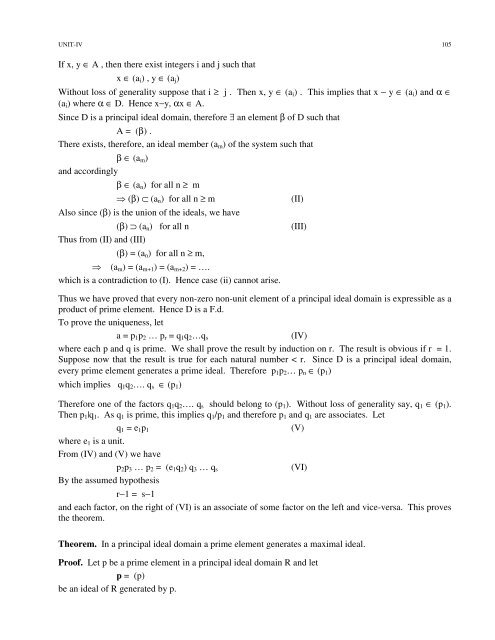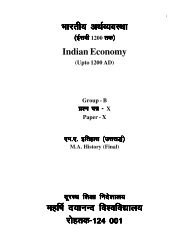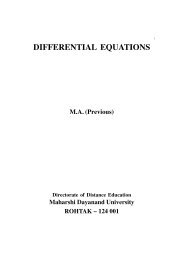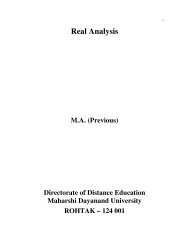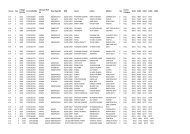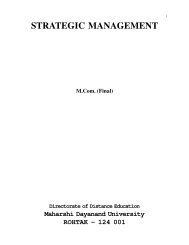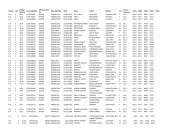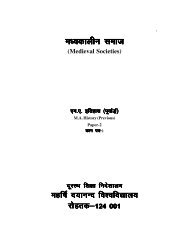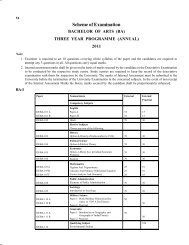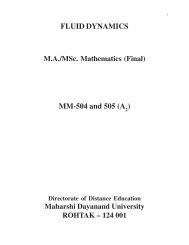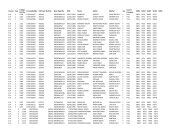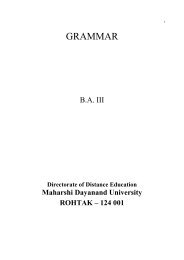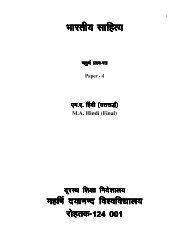Advanced Abstract Algebra - Maharshi Dayanand University, Rohtak
Advanced Abstract Algebra - Maharshi Dayanand University, Rohtak
Advanced Abstract Algebra - Maharshi Dayanand University, Rohtak
Create successful ePaper yourself
Turn your PDF publications into a flip-book with our unique Google optimized e-Paper software.
UNIT-IV 105<br />
If x, y ∈ A , then there exist integers i and j such that<br />
x ∈ (a i ) , y ∈ (a j )<br />
Without loss of generality suppose that i ≥ j . Then x, y ∈ (a i ) . This implies that x − y ∈ (a i ) and α ∈<br />
(a i ) where α ∈ D. Hence x−y, αx ∈ A.<br />
Since D is a principal ideal domain, therefore ∃ an element β of D such that<br />
A = (β) .<br />
There exists, therefore, an ideal member (a m ) of the system such that<br />
β ∈ (a m )<br />
and accordingly<br />
β ∈ (a n ) for all n ≥ m<br />
(β) ⊂ (a n ) for all n ≥ m<br />
Also since (β) is the union of the ideals, we have<br />
(β) ⊃ (a n ) for all n<br />
Thus from (II) and (III)<br />
(β) = (a n ) for all n ≥ m,<br />
(a m ) = (a m+1 ) = (a m+2 ) = ….<br />
which is a contradiction to (I). Hence case (ii) cannot arise.<br />
Thus we have proved that every non-zero non-unit element of a principal ideal domain is expressible as a<br />
product of prime element. Hence D is a F.d.<br />
To prove the uniqueness, let<br />
a = p 1 p 2 … p r = q 1 q 2 …q s<br />
(IV)<br />
where each p and q is prime. We shall prove the result by induction on r. The result is obvious if r = 1.<br />
Suppose now that the result is true for each natural number < r. Since D is a principal ideal domain,<br />
every prime element generates a prime ideal. Therefore p 1 p 2 … p n ∈ (p 1 )<br />
which implies q 1 q 2 …. q s ∈ (p 1 )<br />
Therefore one of the factors q 1 q 2 …. q s should belong to (p 1 ). Without loss of generality say, q 1 ∈ (p 1 ).<br />
Then p 1 |q 1 . As q 1 is prime, this implies q 1 /p 1 and therefore p 1 and q 1 are associates. Let<br />
q 1 = e 1 p 1<br />
(V)<br />
where e 1 is a unit.<br />
From (IV) and (V) we have<br />
p 2 p 3 … p 2 = (e 1 q 2 ) q 3 … q s<br />
(VI)<br />
By the assumed hypothesis<br />
r−1 = s−1<br />
and each factor, on the right of (VI) is an associate of some factor on the left and vice-versa. This proves<br />
the theorem.<br />
(II)<br />
(III)<br />
Theorem. In a principal ideal domain a prime element generates a maximal ideal.<br />
Proof. Let p be a prime element in a principal ideal domain R and let<br />
p = (p)<br />
be an ideal of R generated by p.


